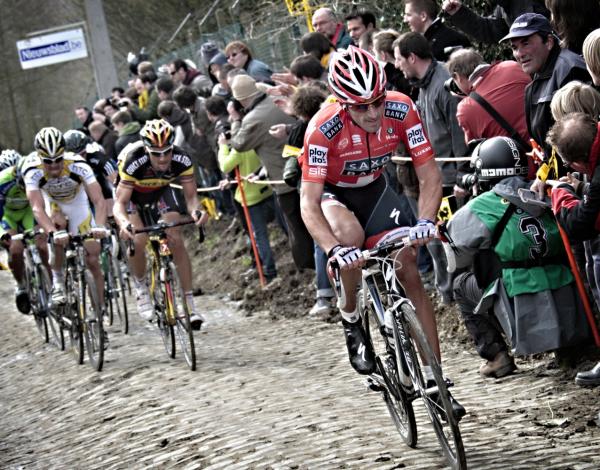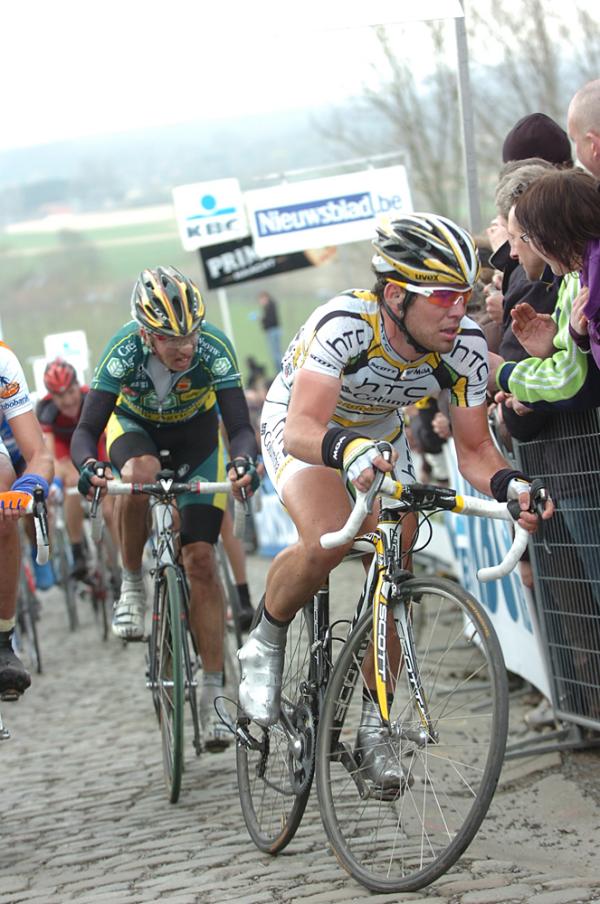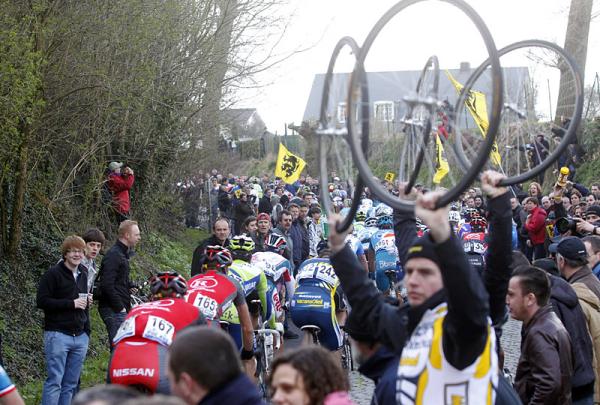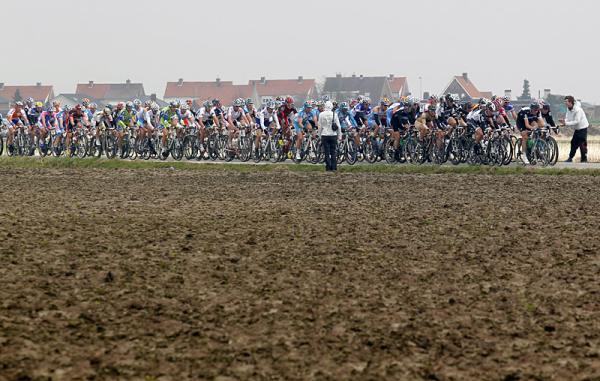Flanders Classics for 2011 presented in Gent
Five more tourist rides added on Classics' race courses




On Thursday evening, the 2011 edition of the Flanders Classics was presented in Gent, Belgium. New for this year is the addition of a cyclo-tourist ride on the original course of every one of the six Flemish one-day races.
The Flanders Classics consists of six Belgian cycling races who combined forces in 2010. They wanted to guarantee the quality of their races and maintain their strong position on the international calendar.
The Flanders Classics are the Omloop Het Nieuwblad, Dwars door Vlaanderen, Gent-Wevelgem, Scheldeprijs, Brabantse Pijl and the cycling Monument Ronde van Vlaanderen.
The man leading the Flanders Classics is Belgian media-tycoon Wouter Vandenhaute. "The Ronde van Vlaanderen is our showpiece, but we're trying to get the best of the Ronde into all other races," Vandenhaute said.
Flanders Classics Cyclo
This year, the Flanders Classics added the Flanders Classics Cyclo to their list of races. While the tourist-Ronde, the "Tour of Flanders for Cyclingtourists and Mountainbikers" has been around for over a decade, there will now also be tourist rides for the Omloop Het Nieuwsblad (on February 27), Dwars door Vlaanderen (on March 20), Ghent-Wevelgem (on March 26), Brabantse Pijl (on April 9) and Scheldeprijs (on April 16). All these tourist rides are organized on exactly the same course that the pros race and within two weeks of the official race.
Omloop Het Nieuwsblad
Get The Leadout Newsletter
The latest race content, interviews, features, reviews and expert buying guides, direct to your inbox!
The opening race of the Belgian cycling season on February 26 features less climbing but more cobbles. By skipping the Valkenberg, the Muur and the Berendries, there are three fewer climbs than last year.
The famous cobbles of the Haaghoek will feature three times during the 2011 edition of the Omloop.
Ghent-Wevelgem
Last year, the ProTour race moved from Wednesday to the Sunday before the Ronde van Vlaanderen. While this wasn't changed with race day being Sunday, March 27, the course was slightly modified with a longer flat first half and one more climb.
This year, there are more kilometres along the coastline before turning inwards through the wide-open meadows of the Moeren, where echelons often form. After more than 130km, the Mont de Cats just accross the French border is the first of nine climbs which all have to be climbed twice before heading towards Wevelgem.
Ronde van Vlaanderen
On April 3, the Ronde van Vlaanderen features as the most well known race of the Flanders Classics. Every 14th Sunday of the year, one of the biggest one-day races of the year is held in Flanders. In the Cyclingnews Reader Poll, last year's battle between Fabian Cancellara and Tom Boonen was voted as second best of the one-day races, trailing only the extremely popular Paris-Roubaix.
For the 12th, time the Ronde will select a "Dorp van de Ronde", literally the "Village of the Tour". This year Zwalm is the place to be. While the villages in previous years have been selected because a legendary rider used to live there, Zwalm has been selected because of its love of cycling. Every year, about 50 cycling races are organized on the village's territory. In this year's edition of the Ronde, the course goes through nine out of 12 boroughs of Zwalm.
Race organizer Wim Van Herreweghe talked about the 2011 course of the Ronde van Vlaanderen during the presentation in Ghent. "After the start on the historical market square of Bruges, we're not heading towards the coast like previous years but inland in the direction of Kortrijk. The official start is in Oostkamp. There's a classic, flat build-up of the race for 75km before arriving in the hilly Flemish Ardennes region.
"The main ingredients of the race are still the unique cobbled hellingen and those make - according to former double winner Peter Van Petegem - for the racing," Van Herreweghe said.
"The Kaperij is a new climb featuring early in the race. We're also re-introducing Ronse and its Kruisberg. The 'Kruis' is one of the three tenors of the race," Van Herreweghe said. The climb which featured in the 1988 world championships that was won by Maurizio Fondriest will make its 48th appearance in the race, according to Van Herreweghe.
"It's the second-most featured climb in the race, behind the Kwaremont, which is the the true number one; then the Muur in Geraardsbergen follows with 46 passages. After the Kruisberg, the race leaves Ronse and heads further up the road towards Hotond which is the highest point of Flanders," Van Herreweghe said.
Triple winner of the Ronde van Vlaanderen Johan Museeuw was pleased to see the climb back in the race. "I've always like to climb the Kruisberg. There's enough space which allows to put the hammer down," Museeuw said.
Deeper into the finale, the short and steep cobbled Paterberg is once again present. "The Paterberg has been much discussed in the past, but it's becoming more and more credible. We continue to take all the necessary safety measures in co-ordination with the city of Oudenaarde. Before hitting the Molenberg, where Fabian Cancellara and Tom Boonen attacked last year, there's a new cobbled section of 4.6km. After the cobbles of the Haaghoek and climbing the Leberg we're skipping the Berendries in favour of the Valkenburg because of road works," Van Herreweghe said.
The rest of the finale remains the same with the climbs of Tenbosse, the Muur and the Bosberg before arriving on the Halsesteenweg road in Meerbeke, Ninove.
The finish area in Ninove has an option to remain in position for the next two years, but during the presentation, former Ronde winner Johan Museeuw was asked whether he liked the finish in Meerbeke.
"I'm not fond of it. I prefer a finish that is closer to the climbs, near Ronse or Oudenaarde," Museeuw said.